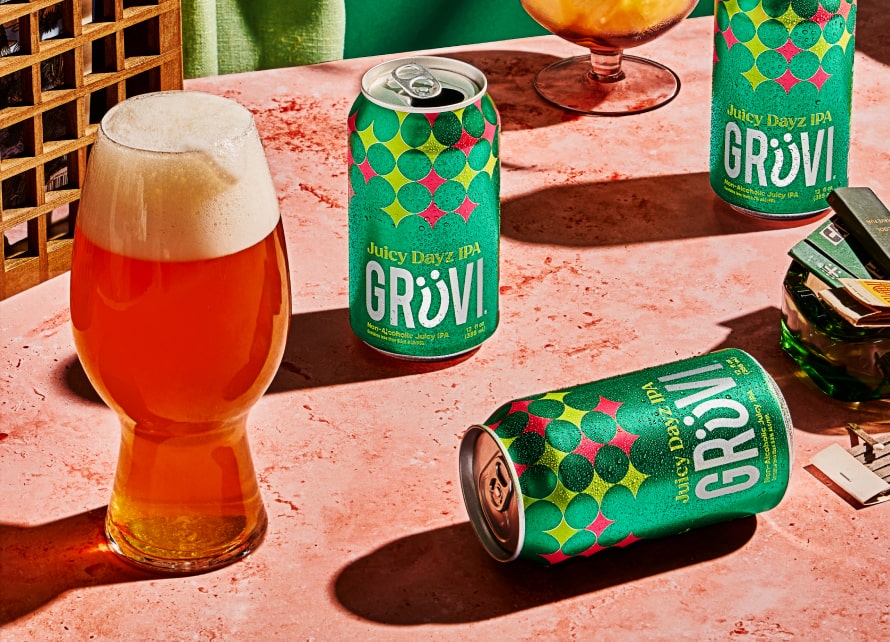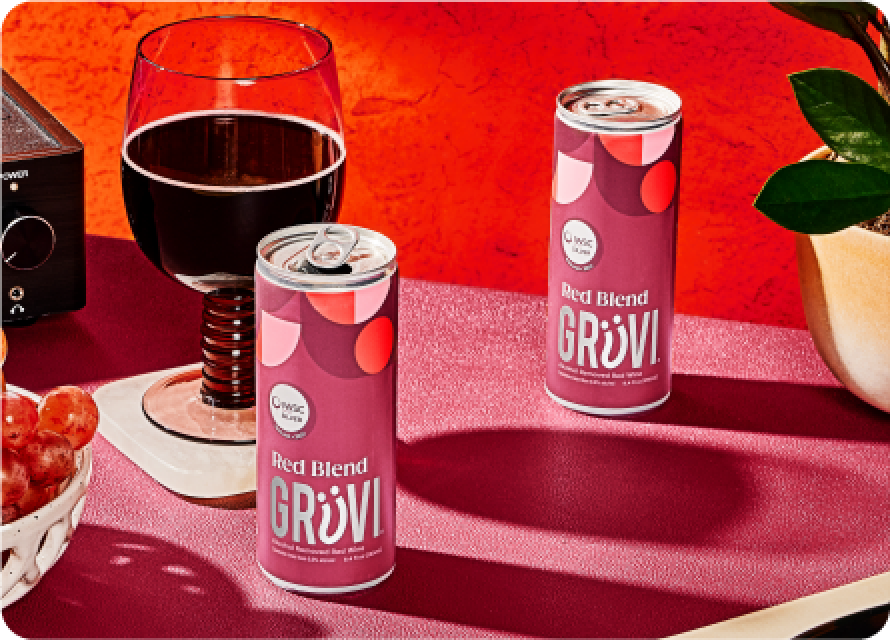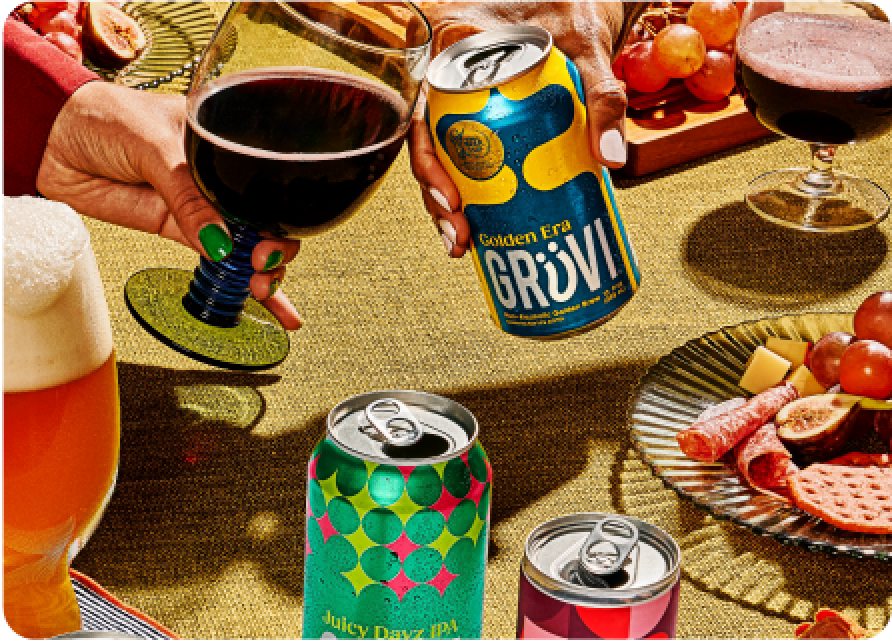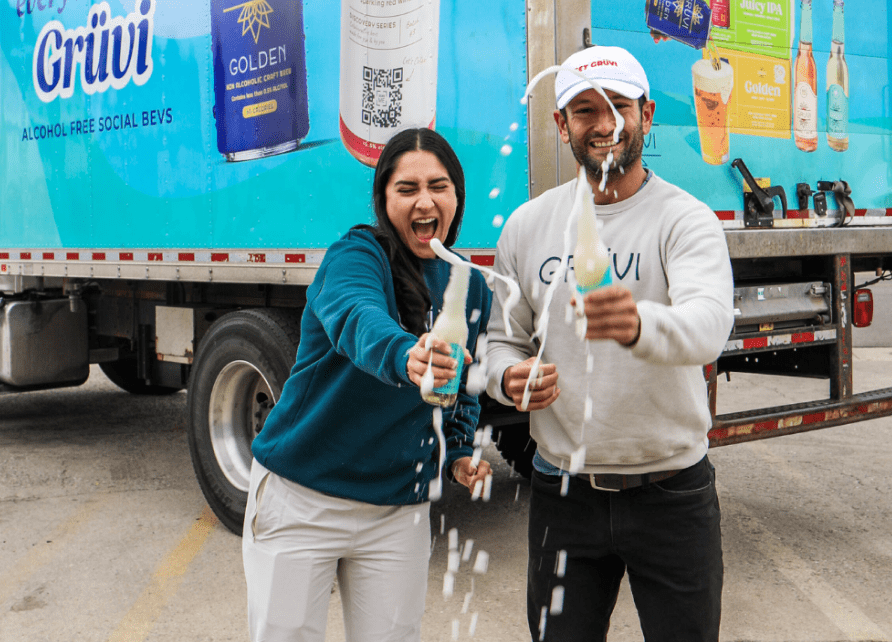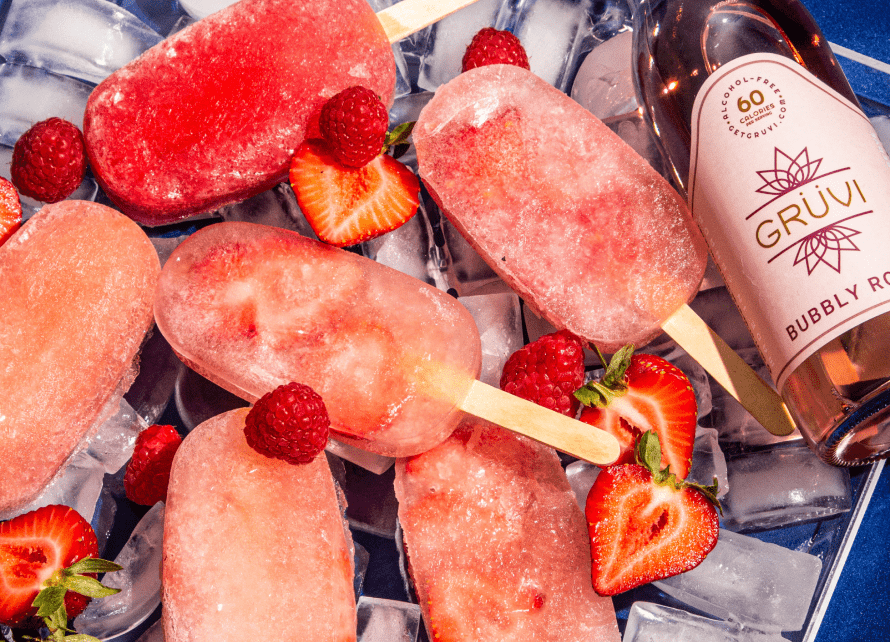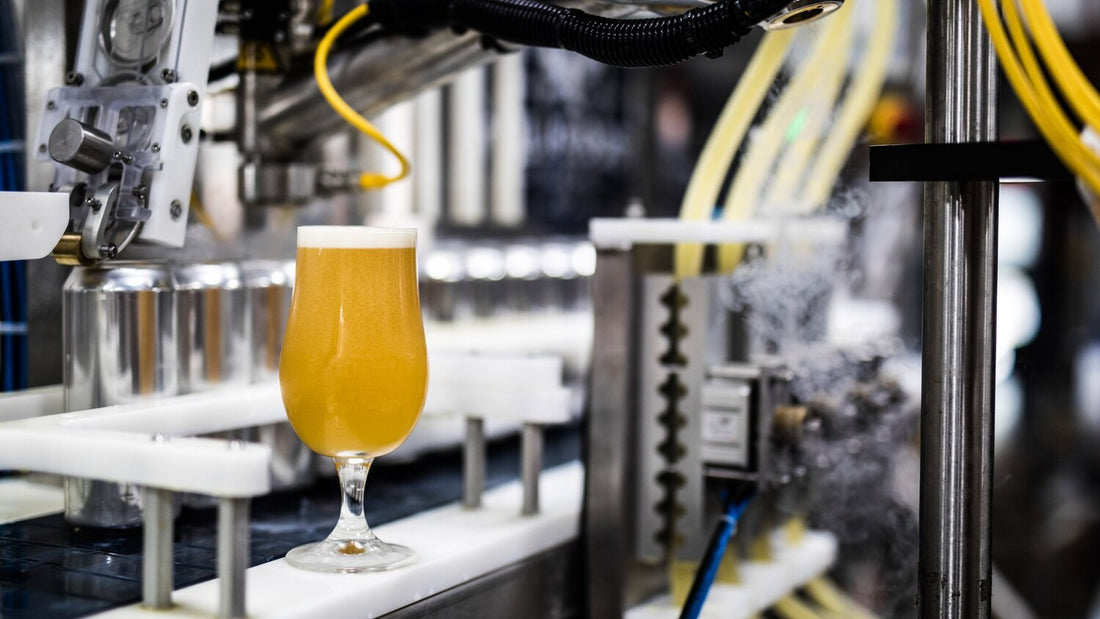
How Is Non Alcoholic Beer Made?
“But that’s just boiled beer!” is a claim I’d started to hear way too often, and I was getting frustrated. I realized despite many people knowing how beer is made, not many people know how it’s made to be non alcoholic. While some NA brands may use boiling in their methods, new demands are leading to new technologies and innovations that can be implemented in the brewing process. In just the last 3 years alone, the industry has seen a monumental jump in the quality and quantity of non alcoholic beers available. Here at Grüvi, we strive to incorporate a variety of these new methods and technologies when creating new styles.
So, How is Non Alcoholic Beer Made?
There are currently two overarching methods to making non alcoholic beers. One method is to interfere with the brewing process to prevent the formation of alcohol during fermentation. The other method is to remove alcohol from a fully brewed, alcoholic beer. Each method can impact the beer’s flavor, body and aroma in different ways.
Alcohol Reduction and Prevention
The following approaches are ways to produce non alcoholic beer by limiting or not allowing alcohol to be produced. These appear to be more common in the craft non alcoholic beer community as it doesn’t require extra equipment.
No Fermentation
No fermentation brewing is done by withholding yeast to the wort and therefore eliminating any possible production of alcohol. Wondering what wort is? It may sound funny, but it’s just the beer before it enters into any fermentation. This is a relatively simple method to execute and will guarantee a 0.00% brew. The approach is quite common in many Islamic countries, where alcohol, even in trace amounts, is prohibited by law. We find this approach to be very challenging, as it often results in sweeter characteristics that tend to overpower the traditional beer taste. However, this can work well in making fruity and sweet dessert beers.
A great beer using this method is the Grüvi Non Alcoholic Peach Pie Ale (coming in August).
Limited or Arrested Fermentation

This approach works by adjusting the brewing process to limit or prevent fermentation in the beer. Most commonly, brewers prepare the wort to contain less fermentable sugars than in a standard recipe. By lowering the level of fermentable sugars, the yeast won’t be able to form high amounts of alcohol. During the mashing process, various enzymes are active at different temperatures, and fermentation will only occur if these enzymes are in the right conditions. By tweaking the temperature and sugar in these environments, brewers are able to achieve alcohol free beers.
Some brewers will utilize a process called arrested fermentation. During this, yeasts are inactivated or removed before they can start producing alcohol in high amounts. This can be done by rapidly cooling down the fermenting beer to almost freezing temperatures.
The brewing team at Grüvi believes this method, when managed closely, is great at maintaining full flavor and body in the beers. To give an arrested fermentation beer a taste, try Grüvi Non Alcoholic Stout.

Utilization of Special Yeast
With the rise in popularity of low and non alcoholic beer, yeast suppliers have been working hard to research and develop specific yeast strains for NA production. These yeasts are relatively new in the non alcoholic brewing community, and the team here at Grüvi expects lots of progress to be made under this method. Many of the strains cannot ferment certain types of sugars such as maltose. These strains can have positive contributions to flavor, such as increased aromas, that are harder to achieve with the other methods. We’ve found these strains require a certain amount of research and testing, but despite the challenges the beers themselves are quite rewarding.
Many of these strains create a specific flavor and taste that we think goes really well with certain styles.Give Grüvi Sour Weisse a taste to try a non alcoholic beer that uses a speciality yeast strain.
Dealcoholization
As the name describes, these are methods that remove the alcohol from fully brewed, alcoholic beers. There are quite a few methods of dealcoholization, many of which are still fairly new to the market. Larger breweries more commonly make their non alcoholic beers using a dealcoholization method as the equipment cost is high. The alcohol removal process can include heat and membrane-based processes such as vacuum distillation, membrane filtration and reverse osmosis.
To try a beer using a dealcoholization process, try a Grüvi Craft Lager (coming soon.)

Boil Off Method
One of the most common ways to dealcoholize is exposing the brew to high heat. Alcohol has a lower boiling point than water. Knowing the difference between the two, brewers can heat the fermented beer until the desired amount of Ethyl Alcohol, or ethanol remains.
Vacuum Distillation
While the above method is fairly simple, the process can affect the flavor and body of the beer. In order to mitigate this, some brewers utilize vacuum distillation instead. While alcohol’s original boiling point is approximately 173.1°F, the vacuum helps to greatly reduce it to 93.2°F. So, instead of heating the beer to the point where it might lose its flavor, the beer only reaches a fairly warm temperature. This allows it to keep its taste intact while still evaporating the alcohol out of the mixture.
Membrane Filtration
Another common method of dealcoholization is through membrane filtration of the beer. Full strength beer is run through a specific membrane that only allows alcohol, color, and some flavor/aroma compounds through. The result is that the water is removed from the beer, the alcohol is distilled off and then the water is returned to the beer.
Reverse Osmosis

Using reverse osmosis for NA involves the beer passing through a semipermeable membrane under high-pressure conditions, similar to the process above. This particular membrane filters out water, alcohol and other small molecules, but larger molecules responsible for beer’s characteristics remain in the concentrate. The next step is diafiltration, where the beer concentration is continuously supplied with deaerated water until the desired alcohol level is reached. Finally, this dealcoholized concentrate is diluted with more water until final beer volume is reached. To carry out this method, brewers will need to have special dealcoholizer equipment, similar to this one shown above.

We found that this method is great at keeping the mouthfeel and body of an alcoholic beer, but can be hard to maintain some of the same brightness that from alcoholic beer. Our friends over at Wellbeing Brewing make some amazing beers using this method.
No matter what method is being utilized, it’s clear that each offers an opportunity for innovation and expansion within the industry. As non alcoholic beer continues to grow in demand, the brewing process and beer quality will only improve over time.
